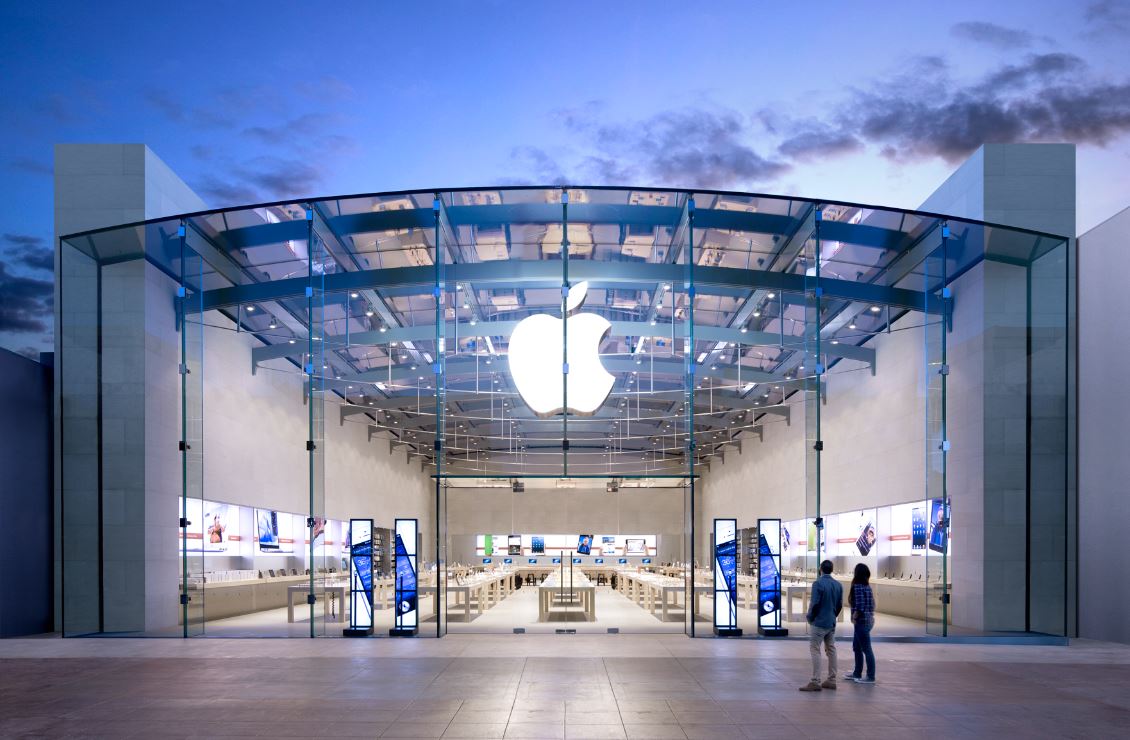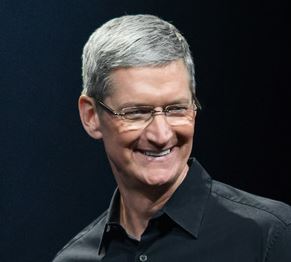
Apple Inc. is an innovator.
Since 1977, the company has been responsible for mass-producing one of the first highly successful personal computers, changing the way we consume all types of media, and singlehandedly influencing the design and functionality of all smartphones. The Apple IIe, iTunes, and iPhone didn’t just change the technology landscape forever; they also changed the way we live.
But something happened after Steve Jobs died: They waited.
Instead of setting trends like they had been doing for 30 years, Apple sat quietly in the shadows and let other companies take the risks. The tech world had been wondering if Tim Cook was capable of running the company without his mentor, and Apple users were dumbfounded as to why Apple wasn’t doing anything “new.”
But now the wait is over.
“This is epic.”
– Tim Cook, CEO of Apple Inc.
Two Important Takeaways from Yesterday’s Special Event:
The iPhone now has its best display ever.
The redesigned iPhone signals a new era for Apple’s flagship device. Not only is it the biggest and thinnest design yet, it also has the best display ever seen on an iPhone.
And it looks very nice.
Influenced by the iPad Air, the iPhone 6 has a glass front that curves around the edges of the display until it reaches the aluminum rear. The 4.7-inch version is only 0.69cm thick while the 5.5-inch version measures in at 0.71cm. The end result is an extremely thin and large display that will finally be able to compete against other smartphones.
But there is one big difference between the iPhone 6 and other mobile devices: Retina HD Display.

The iPhone 6 has an impressive Retina HD Display that makes everything look better.
iPhone 6 Retina HD Display Specs
- 4.7-inch or 5.5-inch (diagonal) LED-backlit widescreen Multi‑Touch display with IPS technology
- 1334-by-750-pixel resolution at 326 ppi or 1920-by-1080-pixel resolution at 401ppi
- 1400:1 contrast ratio (typical) or 1300:1 contrast radio (typical)
- 500 cd/m2 max brightness (typical)
- Full sRGB standard
- Dual-domain pixels for wider viewing angles
- Fingerprint-resistant oleophobic coating on front
- Support for display of multiple languages and characters simultaneously
- Display Zoom
- Reachability
There’s a lot of controversy surrounding Apple’s patented Retina Display technology and whether the distance between our eyes and device actually matters. But anyone who’s ever used a Retina screen for an entire day will probably confirm it looks better than a screen without it. And they’re probably right.
The normal viewing distance for a mobile phone is 10-inches. According to Apple, this means you don’t need an exorbitant amount of pixels to achieve the best image quality. Instead, the iPhone 6 packs in 326ppi with a 1334×750 resolution into the 4.7-inch model, and 401ppi with a 1920×1080 resolution into the 5.5-inch model. All this leads to higher contrast, wider-angle viewing, and an improved polarizer that makes good use of the iPhone 6’s larger screen.
But unless you’re an iPhone user, you’re probably wondering what makes the iPhone 6’s Retina Display better than previous iPhones or why it even matters. Those are good questions with a simple answer: iOS 8.
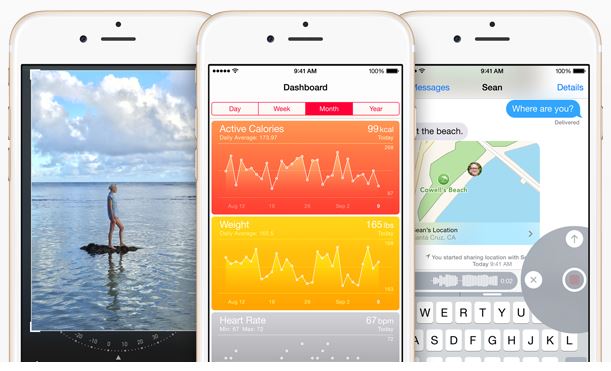
iOS has been completely redesigned to complement the iPhone 6.
The iPhone 6 will come packaged with iOS 8 and all of the software that’s included with the iPhone 6 is specifically designed to take advantage of the new Retina HD Display and the extra screen space. Apps like Mail, Calendar, and Messages have all been redesigned and Apple is promising users they will be able to “see more, do more, and be more productive.”
The iPhone’s new display is a huge upgrade for Apple users and it’s important because the iPhone is the most popular smartphone in America – it’s also the most popular camera in the world according to Flickr.
It’s never been more imperative for Apple to upgrade their screen technology and catch up with the competition. By waiting until they were able to it right in conjunction with the iOS 8 redesign, Apple is making sure you believe the Retina HD Display hype.
While a bigger screen was undoubtedly welcome news for iPhone users, it was another announcement that will eventually impact everyone’s life: The Apple Watch.
The Apple Watch is more than just a fashion statement.
With tablet sales on the decline and smartwatch manufacturing on the rise, it was only a matter of time before we saw what Apple’s version of the smartwatch would look like. And whether you want to believe it or not, its release signifies that the wearable technology era has arrived.
Instead of releasing a smartwatch alongside the competition, Apple learned from the early manufacturer’s mistakes and fixed them. By gauging consumers’ reactions, Apple was able to determine what people want out of their smartwatch and the answer may surprise you: Fashion.
While recently-released smartwatches like the Moto 360 and LG G Watch R have also taken a fashion-first approach, Apple is the only smartwatch manufacturer that has a version of their device for any occasion. Whether you’re a casual user, an athlete, or just want to show off; the Apple Watch is available in three distinctive collections.
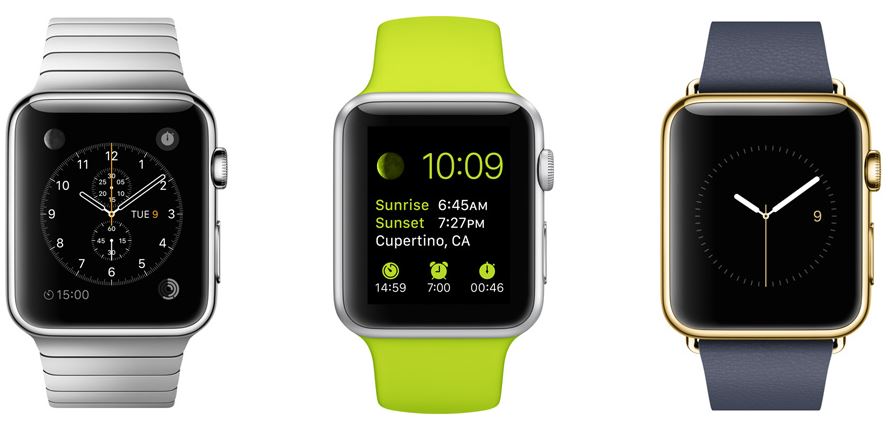
The Apple Watch has many different styles to choose from and over two million watch face options.
Apple Watch
- Highly polished stainless steel and space black stainless steel cases
- Display protected by sapphire crystal
- Choice of three different leather bands, a link bracelet, a Milanese loop, and a band from high-performance fluorelastomer
Apple Watch Sport
- Cases are made from lightweight anodized aluminum in silver and space gray
- Display is protected by strengthened Ion-X glass
- Matching fluoroelastomer band comes in five different colors
Apple Watch Edition
- Six uniquely elegant expressions
- Case crafted from 18-karat gold that metallurgists have developed to be twice as hard as standard gold
- Display protected by polished sapphire crystal
Early smartwatch designs failed to succeed because, quite frankly, they were ugly and didn’t do much. The Apple Watch aims to change all that by providing over two million different watch faces, a variety of styles, and plenty of features to convince people to buy one.
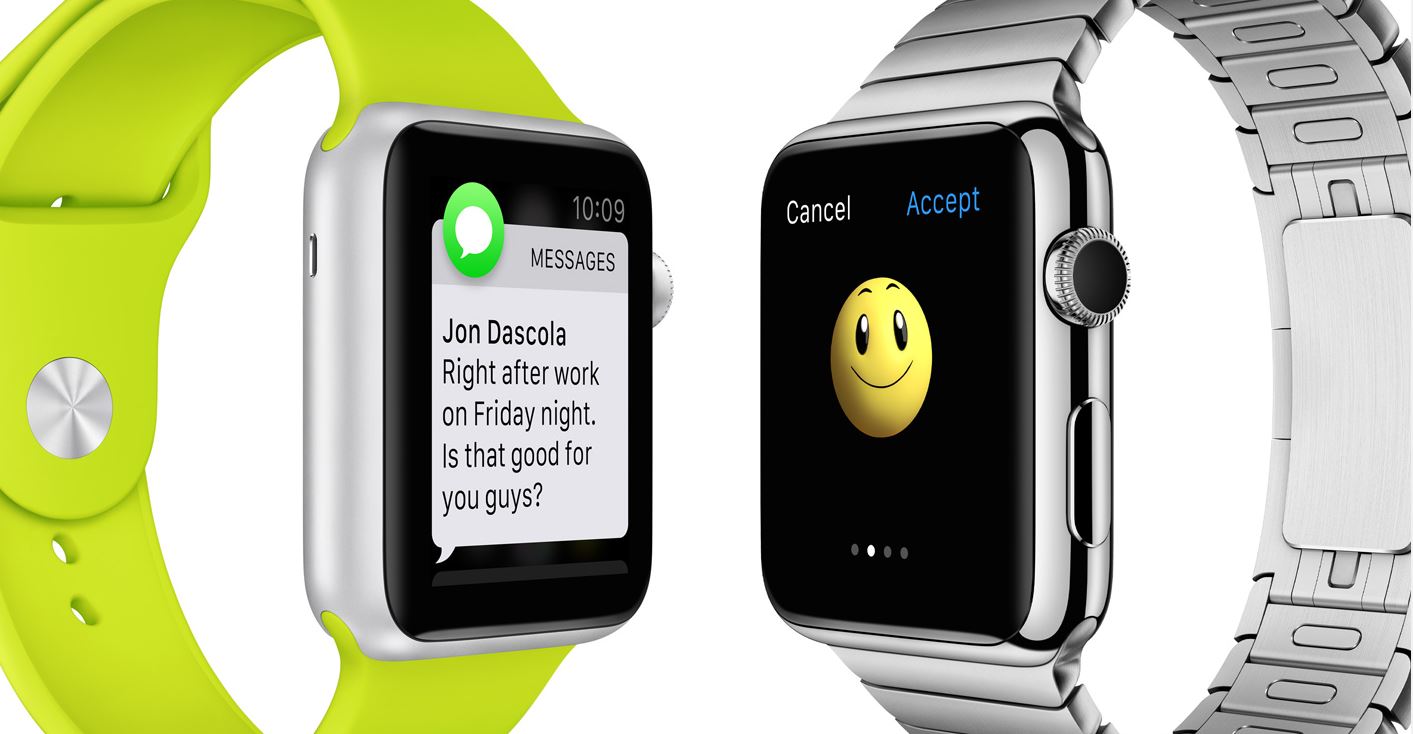
The Apple Watch sends and receives messages and phone calls, but it does a lot more than that.
Apple Watch Features
- Messages
- Sending and receiving messages is easy with Apple Watch. You can dictate a message or select from preset options — Apple Watch will make suggestions based on the things you write most. Or you can skip words altogether by sharing one of our new animated emojis.
- Phone
- Use the built-in speaker and microphone for quick chats, or seamlessly transfer calls to your iPhone for longer conversations. You can also transfer calls from Apple Watch to your car’s speakerphone or your Bluetooth headset. And silence incoming calls by covering Apple Watch with your hand.
- Mail
- When you get mail, Apple Watch alerts you right away. You can read the message, then flag it, mark it as read or unread, or move it to the Trash. Or open the message on your iPhone, where you can type a lengthier response.
- Sketch
- Use your finger to draw something quickly. Your friend on the other end can watch your drawing animate, then respond with a custom creation for you.
- Walkie Talkie
- For a fun alternative to a phone call, use the built-in speaker and microphone to trade spur-of-the-moment sound bites with friends.
- Tap
- Let friends or loved ones know you’re thinking of them with a silent, gentle tap they’ll feel on the wrist. You can even customize taps for different people.
- Heartbeat
- When you press two fingers on the screen, the built-in heart rate sensor records and sends your heartbeat. It’s a simple and intimate way to tell someone how you feel.
- Move
- Each week, Apple Watch suggests a new Move goal for how many active calories to burn per day, based on your recent history. Adjust it up or down until it feels just right. You close the Move ring when you meet your personal active calorie burn goal for the day.
- Exercise
- Any activity performed at the level of a brisk walk or above is considered exercise. And Apple Watch keeps track of how much you do each day, even when it’s not in the context of a dedicated workout. You close the Exercise ring when you reach the globally recommended 30 minutes of exercise a day.
- Stand
- Apple Watch senses when you stand up and gives you credit when you do. So you can minimize your sedentary time throughout the day. If you’ve been sitting too long, it reminds you to get up. You close the Stand ring when you’ve stood for at least one minute in 12 different hours during the day.
- Goals
- The Workout app suggests personalized goals based on your workout history. For example, you’ll always see your best effort posted, and if your last run was 30 minutes, that will be one of the quick-start options. You can select it, increase or decrease it, or choose a different goal based on how far you want to go or how many calories you want to burn.
- Reminders
- During your workout, Apple Watch provides timely encouragement by letting you know when you’re halfway there or almost done. It also gives you a detailed summary of your workout so you can stay motivated to reach new milestones.
- Achievements
- When you reach a personal best in the Workout app or hit a milestone in the Activity app, Apple Watch is quick to celebrate. You’ll earn special badges for a variety of achievements. Not only is it a nice reminder of what you’ve accomplished, but it also encourages you to keep going.
- Apple Pay
- Now you can buy coffee, groceries, and more right from your wrist. With a simple setup, you can use your credit and debit cards at hundreds of thousands of U.S. locations, with more to come.
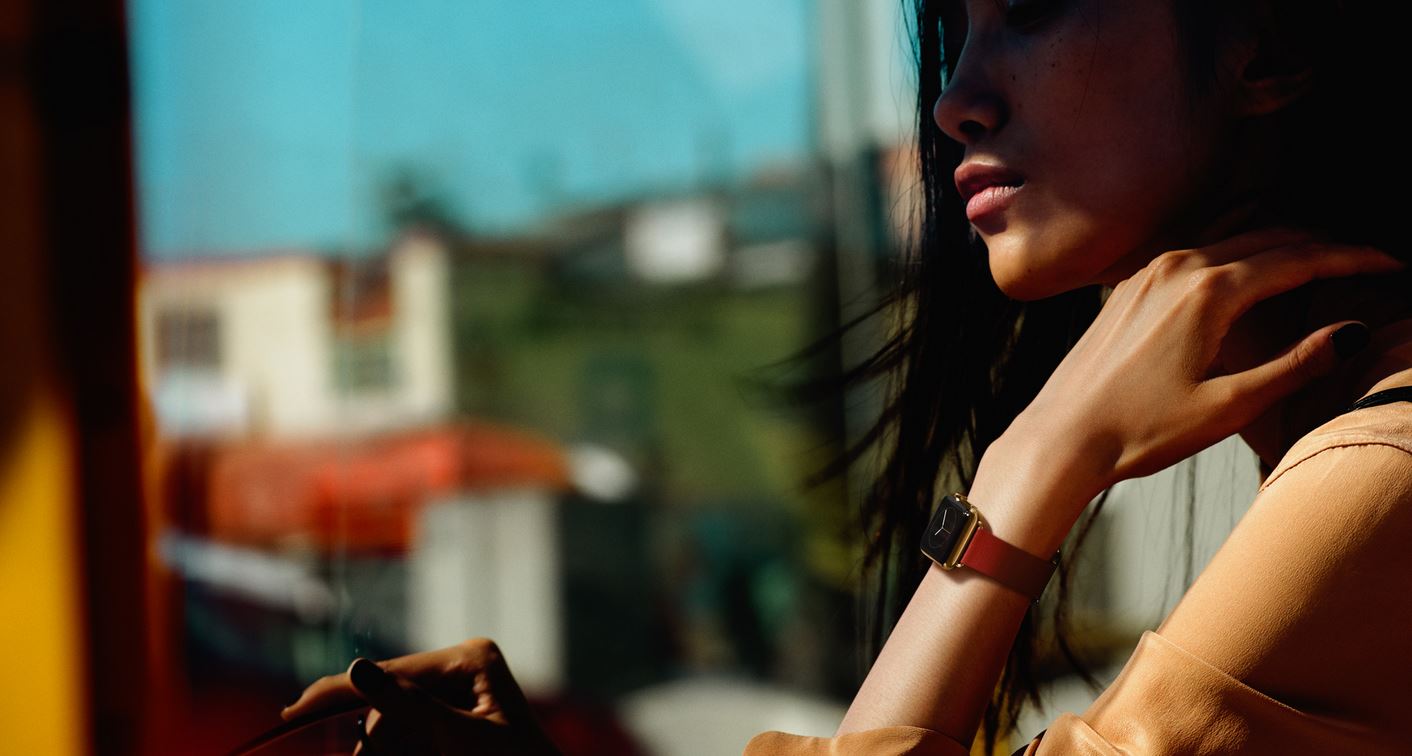
Could the Apple Watch be the first smartwatch to convince the masses to wear technology?
It may seem like the Apple Watch simply does everything your smartphone is already capable of – and that’s exactly the point. For the first time ever, consumers will be able to put on a smartwatch that actually does something useful while making them look good at the same time. Apple’s smartwatch does more than just allow you to use the same apps you use on your smartphone, it makes the smartphone a part of you.
The Apple Watch is significant because it could potentially change the way people interact with technology the same way the Apple IIe, iTunes, and the iPhone did. Boasting many of the same features we already can’t live without and many more that will make our lives easier, the Apple Watch seems poised to be the first piece of wearable technology to achieve worldwide adoption.
It may also prove that wearing technology on our bodies is better than having a bigger smartphone screen.
Will you be buying an Apple iPhone 6 or an Apple Watch? Why or why not? Let us know in the comments below!

